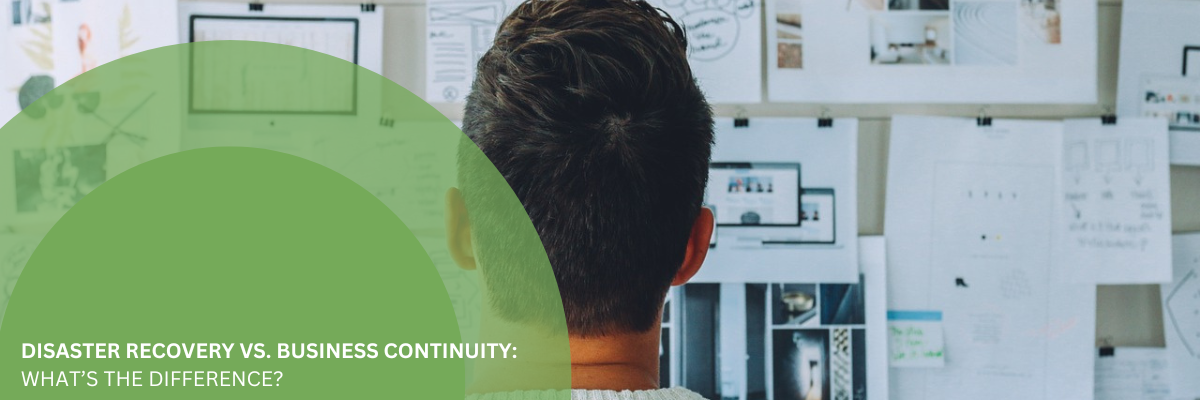Making sure that operations can keep going smoothly no matter what happens is crucial. Two key strategies that come up often are Disaster Recovery (DR) and Business Continuity (BC). While they are related and sometimes mixed up, they are actually different. Let’s consider what each one means, look at some examples using Microsoft 365, and see how Yunatech, an IT solutions provider from Essex and London, can assist.
What is Disaster Recovery?
Disaster Recovery is all about getting your IT systems and data back up and running after something goes wrong. This could be anything from a natural disaster to a cyber-attack. The goal is to minimise downtime and data loss, making sure your business can bounce back quickly.
Key Parts of Disaster Recovery
Data Backup: Regularly saving copies of your data in safe places.
Recovery Time Objective (RTO): The maximum amount of time it should take to get everything back to normal.
Recovery Point Objective (RPO): The maximum amount of data a business can afford to lose.
Testing the Plan: Regularly testing your DR plan to make sure it works.
Microsoft 365 and Disaster Recovery
Microsoft 365 (MS365) offers strong disaster recovery options. For example, if data gets corrupted or deleted by mistake, you can restore files from the Recycle Bin or use version history to get back previous versions of documents. MS365 also has data centres in different locations, so if one goes down, your data is still safe and accessible.
Example: Microsoft Teams Outage
Imagine a scenario where a regional data centre experiences an outage. With MS365, services like Teams can automatically switch to another data centre, keeping communication and collaboration tools running with minimal disruption.
What is Business Continuity?
Business Continuity is a broader concept that covers the entire organisation. It involves planning to ensure that the business can keep operating during and after a disaster. This includes keeping essential functions like communications, finance, operations, and IT running smoothly.
Key Parts of Business Continuity
Risk Assessment: Identifying any potential threats and their potential impact on business operations.
Business Impact Analysis (BIA): Determining which business functions are critical and what resources they need.
Continuity Planning: Developing strategies to keep business functions going.
Training and Awareness: Making sure staff know their roles in the BC plan.
Microsoft 365 and Business Continuity
Microsoft 365 helps with business continuity through its suite of cloud-based services. For instance, if your physical office becomes inaccessible, employees can still access emails, documents, and collaboration tools from anywhere with an internet connection. This ensures that business operations can continue without major interruptions.
Example: COVID-19 Pandemic
During the COVID-19 pandemic, many businesses had to quickly switch to remote work. Those using Microsoft 365 were able to maintain business continuity effectively. Tools like Teams enabled remote meetings and collaboration, while OneDrive and SharePoint ensured access to important documents and resources, showing how cloud solutions support business continuity.
Yunatech:
Yunatech, based in Essex and London, specialises in providing comprehensive IT solutions tailored to your needs. Here’s how Yunatech can help with Disaster Recovery and Business Continuity:
Consultation and Planning: Yunatech offers expert advice to develop DR and BC plans that fit your business goals and regulatory requirements.
Implementation: From setting up automated backups to configuring failover systems, Yunatech ensures your IT infrastructure is reliable and resilient.
Monitoring and Maintenance: Continuous monitoring and regular testing keep your DR and BC plans effective and up-to-date.
Training and Support: Yunatech provides training for your staff on DR and BC protocols and offers support to address any IT issues promptly.
While Disaster Recovery and Business Continuity are closely linked, they are designed for different purposes. Disaster Recovery focuses on restoring IT systems and data, while Business Continuity ensures that the entire organisation can keep going during and after a disaster. Using solutions like Microsoft 365 and partnering with experts such as Yunatech can significantly boost your business’s resilience and readiness to face unexpected disruptions.

